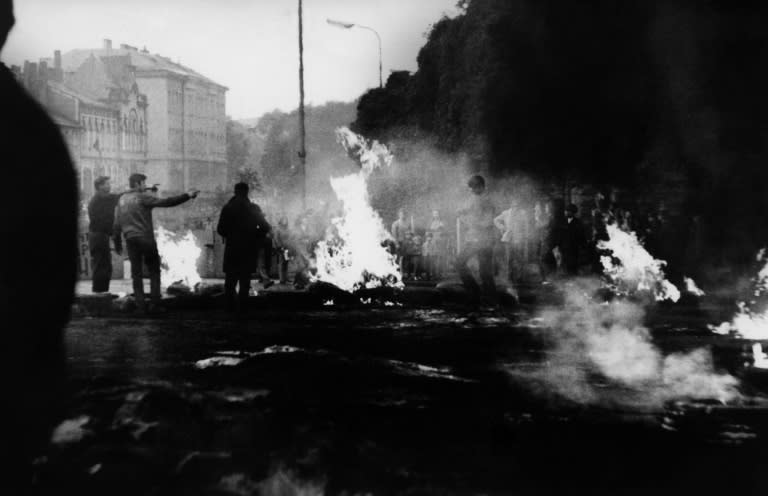Fifty years ago, Soviet tanks crush the Prague Spring
In August 1968 Soviet tanks rolled into communist Czechoslovakia to crush a burgeoning democratic reform movement known as the Prague Spring. Here is a recap of the shock intervention that reined in the Soviet satellite state, its aspirations for democracy warded off for another 20 years. - Explosive context - "At 11:00 pm, Soviet, Polish, East German, Bulgarian and Hungarian troops crossed the Czechoslovak border," AFP reported early on August 21, picking up Radio Prague's announcement of the overnight invasion. Tensions had been mounting between then Soviet leader Leonid Brezhnev and the reformist government that had taken over in the Central European state. In January, Moscow's pointman was replaced by Alexander Dubcek, who became head of the powerful Communist Party. General Ludvik Svoboda became president in March. Driven by Dubcek, reforms aimed at achieving "Socialism with a human face" were introduced. They included the abolition of censorship, freedom of assembly and association, and cautious economic reforms. Moscow responded with warnings and an ultimatum. - Tanks in the cities - At 4:59 am Radio Prague announced that the capital and the rest of the country had been occupied. Moscow and its communist allies poured 200,000 soldiers into Czechoslovakia that day, their numbers rising to 600,000. The government urged citizens to "remain calm and not to take up arms against the foreign troops." Many learnt of the invasion of their country only via their radios. In Prague, the Soviet troops were concentrated around three nerve centres: the headquarters of the Communist Party's Central Committee, Prague Castle and the radio headquarters. From dawn, hundreds of Prague citizens gathered in front of the radio building which was surrounded by tanks. Soldiers fired bursts of machine-gun fire at the building and nearby houses with people shouting insults at them like "Gestapo", or "Long live Dubcek". Around 100 people were killed in the first days of the offensive. - Leaders arrested - Russia's Tass news agency said the intervention followed a request from "Czechoslovakian statesmen". Historians would later establish that one was Vasil Bilak, a member of the Communist Party's politburo. In the early hours of the invasion, the Soviet Red Army arrested Dubcek, prime minister Oldrich Cernik and others. They were taken to the Kremlin on August 22, joined a day later by another group that included the president, Svoboda. All were forced to sign the Moscow Protocol, a diktat which formalised the Soviet occupation, cooperating after four days of fraught talks. Dubcek was kept in power but he was deliberately and progressively weakened. - The people resist - The population, in the dark about the Moscow talks, had meanwhile mobilised non-violent resistance to the occupation. Street signs were taken down to confuse the invaders. In the countryside, where farms flew the Czechoslovak flag at half-mast, road signs went up that showed a single arrow for "Direction Moscow". Twelve free radios continued to operate, despite Soviet attempts to take them off air. Car horns, factory sirens and church bells regularly sounded in unison in a sign of support for Svoboda and Dubcek, whose return was awaited restlessly. - Prague Spring extinguished - On the morning of August 27, alerted by the radio of the imminent return of their leaders, jubilant crowds lined the road leading from the airport to the castle, where the national flag was flying again. But their relief was short-lived. In an address to the nation, Svoboda announced that the departure of the "occupiers" was conditional on a "normalisation of the situation". "Freedom will be restricted for a time, to allow a return to normal," Dubcek added in "a broken voice... as if to take his breath or overcome his emotions," AFP wrote. An agreement on the temporary stationing of Soviet troops was signed in April 1969. Dubcek was ousted as head of the Communist Party in April 1969, and massive purges followed. Democracy would not return until the Velvet Revolution in 1989. Four years later, the country split into the Czech Republic and Slovakia.





